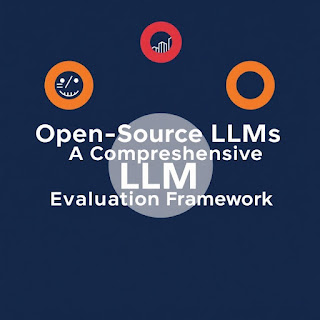Unlocking the Secrets of Visual Intelligence: What We Know
The ability to see allows us to grasp the world around us. Vision is much more than just the act of seeing; it's how we interpret, understand, and make decisions from what we perceive. This complex skill is known as visual intelligence.
The Human Advantage: Why Visual Intelligence Matters
Visual intelligence plays a critical role in our lives. It helps us navigate environments, understand relationships, and make quick decisions. This skill is crucial for everyday tasks, from driving to social interactions. Enhanced visual intelligence can lead to better problem-solving and creativity, impacting various fields, including education and job performance.
Beyond Sight: Defining Visual Intelligence
Visual intelligence refers to the ability to interpret and analyze visual information effectively. It includes recognizing patterns, spatial reasoning, and the capacity to visualize concepts mentally. This intelligence is not limited to just seeing; it involves processing what we see and making sense of it.
A Glimpse into the Article: What to Expect
This article explores the neuroscience behind visual intelligence, its real-world applications, methods of measurement, ways to enhance it, and future research directions. Understanding visual intelligence can open doors to personal and professional growth.
The Neuroscience of Visual Perception
How the Brain Processes Visual Information
The brain processes visual information through a sequence of complex steps. Light enters the eyes and is converted into electrical signals. These signals travel through the optic nerve to various parts of the brain, including the visual cortex, where interpretation occurs.
The Role of Different Brain Regions in Visual Intelligence
Different regions of the brain play specific roles in visual processing:
- Occipital lobe: Handles basic visual processing, like color and movement.
- Parietal lobe: Integrates sensory information and supports spatial awareness.
- Temporal lobe: Involved in recognizing faces and objects.
Individual Differences in Visual Processing
Not everyone processes visual information the same way. Factors such as genetics, environment, and experiences shape how we perceive the world. Some people may excel in visual-spatial tasks, while others might struggle.
Visual Intelligence in Action: Real-World Applications
Case Study 1: Visual Intelligence in Art and Design
Artists rely heavily on visual intelligence to create compelling works. They use color, shape, and composition to evoke emotions and communicate ideas. Understanding the principles of visual design can elevate any creative project.
Case Study 2: Visual Intelligence in Sports and Athletics
Athletes depend on visual intelligence to improve their performance. They must quickly assess their surroundings, anticipate movements, and execute strategies. Training often focuses on enhancing these visual skills, leading to better outcomes in competitions.
Case Study 3: Visual Intelligence in Medicine and Healthcare
In the medical field, visual intelligence is vital. Doctors use it to interpret images from scans, identify symptoms, and make informed decisions. Improving skills like visual memory can lead to more accurate diagnoses and better patient outcomes.
Measuring and Assessing Visual Intelligence
Standardized Tests and Assessments
Several standardized tests evaluate visual intelligence. These assessments often include spatial reasoning tasks and pattern recognition exercises. Such tests can help identify individual strengths and weaknesses.
Emerging Technologies in Visual Intelligence Measurement
Technology is advancing tools for measuring visual intelligence. Eye-tracking technologies and augmented reality can provide real-time feedback and insights into visual processing skills. These innovations make assessments more engaging and informative.
Challenges in Assessing Visual Intelligence
Assessing visual intelligence presents challenges. Different backgrounds and experiences may affect performance on tests. There is also debate on whether assessments accurately represent a person's overall intelligence.
Enhancing Visual Intelligence: Practical Strategies
Training Your Visual Attention
Improving visual attention can be as simple as practicing mindfulness exercises. Focusing on specific details within a scene or image helps sharpen visual acuity. Regular practice can lead to noticeable improvements.
Developing Visual Memory and Recall
Engaging in memory games or puzzles can enhance visual memory. Techniques like visualization and association make recalling visual information easier. The more you practice, the better you get.
Utilizing Technology to Boost Visual Skills
Apps and software designed to train visual intelligence are available. Many offer interactive exercises that make learning enjoyable. Embrace these tools to enhance your visual skillset.
The Future of Visual Intelligence Research
Artificial Intelligence and Visual Processing
AI is revolutionizing how we understand and process visual information. Machine learning algorithms analyze vast amounts of data, offering insights that help researchers discover new ways to improve visual intelligence.
New Frontiers in Understanding Visual Cognition
Ongoing research delves into how we perceive and interpret visual stimuli. Exploring the connections between visual intelligence and other cognitive abilities can lead to a deeper understanding of human cognition.
The Impact of Visual Intelligence on Society
Enhancing visual intelligence has the potential to benefit society. Better visual skills can improve education, workplace performance, and overall quality of life. Emphasizing its importance in various sectors is key for future development.
Conclusion: A Visual Intelligence Revolution
Key Takeaways and Summary of Findings
Visual intelligence is an essential skill that influences many aspects of life. From art to medicine, its applications are vast. The brain processes images in sophisticated ways, and individual differences exist in visual processing.
Further Exploration and Resources
Exploring visual intelligence opens doors to numerous resources. Books, articles, and online courses can deepen understanding and application of this critical skill.
The Importance of Continued Research and Development
Continued research in visual intelligence is imperative. As society evolves, so does the need for better visual skills. Emphasizing the importance of this field can lead to innovative strategies and tools that benefit everyone.




.jpeg)
.jpeg)
.jpeg)